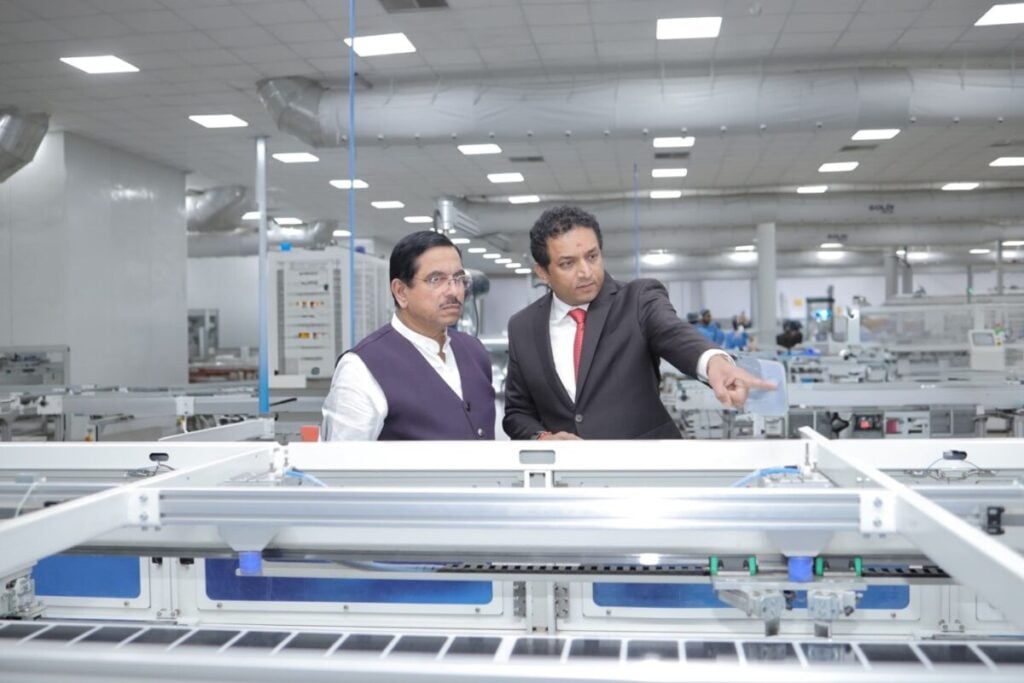
India’s Ministry of New and Renewable Energy (MNRE) has stated that imported wafers would not qualify for classification as ‘domestically produced’.
Under this new domestic content requirement, solar PV cells based on crystalline-silicon technology would be considered to be domestically manufactured only if it used undiffused silicon wafers – also called ‘black wafers’ – produced in India. These wafers are classified under Customs Tariff Head 3818.
Try Premium for just $1
- Full premium access for the first month at only $1
- Converts to an annual rate after 30 days unless cancelled
- Cancel anytime during the trial period
Premium Benefits
- Expert industry analysis and interviews
- Digital access to PV Tech Power journal
- Exclusive event discounts
Or get the full Premium subscription right away
Or continue reading this article for free
On the other hand, imported diffused silicon wafers – also called ‘blue wafer’ – used as raw materials for the manufacturing of solar cells in India would not be considered as domestically manufactured PV cells.
This requirement would apply to programmes or schemes – including tenders and auctions – that have been implemented by the MNRE as it mandates the use of domestically manufactured solar cells and modules.
As highlighted above, this would apply to crystalline silicon technology, as thin-film solar PV modules manufactured in Indian facilities would be eligible to be deployed on solar PV projects under MNRE’s schemes and programmes.
The memorandum was distributed to the solar manufacturers enlisted in the MNRE’s Approved List of Models and Manufacturers (ALMM). This list currently only applies to domestically manufactured solar modules, but in December 2024, the MNRE announced that solar cells will be included, starting in June 2026.
Ahead of that announcement in December, the MNRE launched a call in September 2024 for comments on the proposition to add solar cells to the ALMM. This sparked a series of capacity announcements from Indian manufacturers, including Solex Energy, Tata Power, Vikram Solar, Goldi Solar, Alpex Solar, Avaada and Gautam Solar among others.
80GW of solar cell nameplate capacity by 2026
As companies announced capacity additions or expansions, some have also recently commissioned solar cell and module capacity. Last month, a subsidiary of Indian power conglomerate Tata Power commissioned a 4.3GW solar cell and module assembly plant in the Indian state of Tamil Nadu; Gautam Solar and Waaree commissioned the first phase of their module and solar cell plants, respectively, last month too.
More recently, Goldi Solar launched the country’s ‘first’ AI-powered solar manufacturing line in Gujarat. Solar cell production is planned to begin soon, as the company targets to reach an annual nameplate capacity of 14GW for the manufacturing plant.
Earlier in the week, Avaada commissioned a 1.5GW TOPCon module assembly plant in the northern Indian state of Uttar Pradesh, while it started construction on a 5GW module assembly plant. As more domestic PV capacity comes online and more announcements continue to be made, the government recently showed support for domestic PV manufacturing with provisions in its budget towards the clean energy manufacturing sector.
With more annual nameplate capacity being commissioned across India, the country is accelerating its domestic manufacturing. In October 2024, market research firm Mercom India estimated that the country would reach an annual nameplate capacity of 80GW for solar cells by 2026. This would represent a more than tenfold increase from the nameplate capacity available as of the end of the first half of 2024, which sat at 7.6GW of solar cells produced domestically.
Reaching that goal could not only allow solar manufacturers to cover the needs of the domestic market but also set itself as a possible exporter of module capacity to the US (Premium access).





